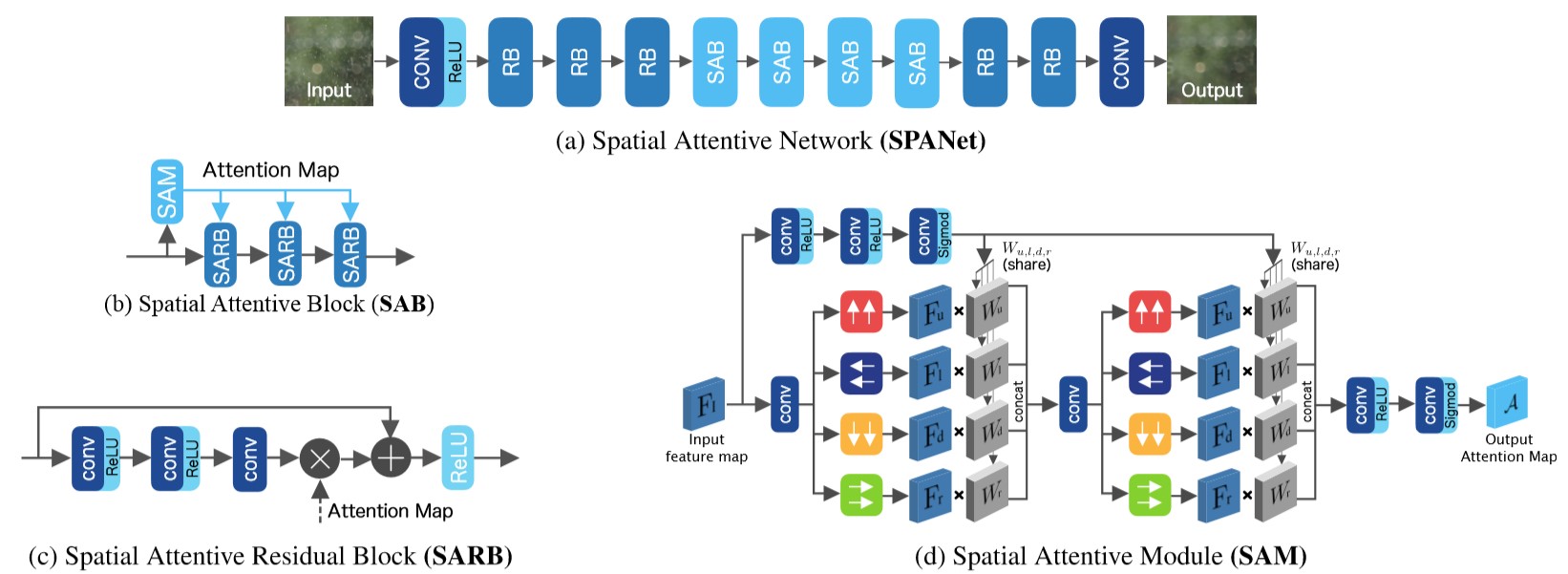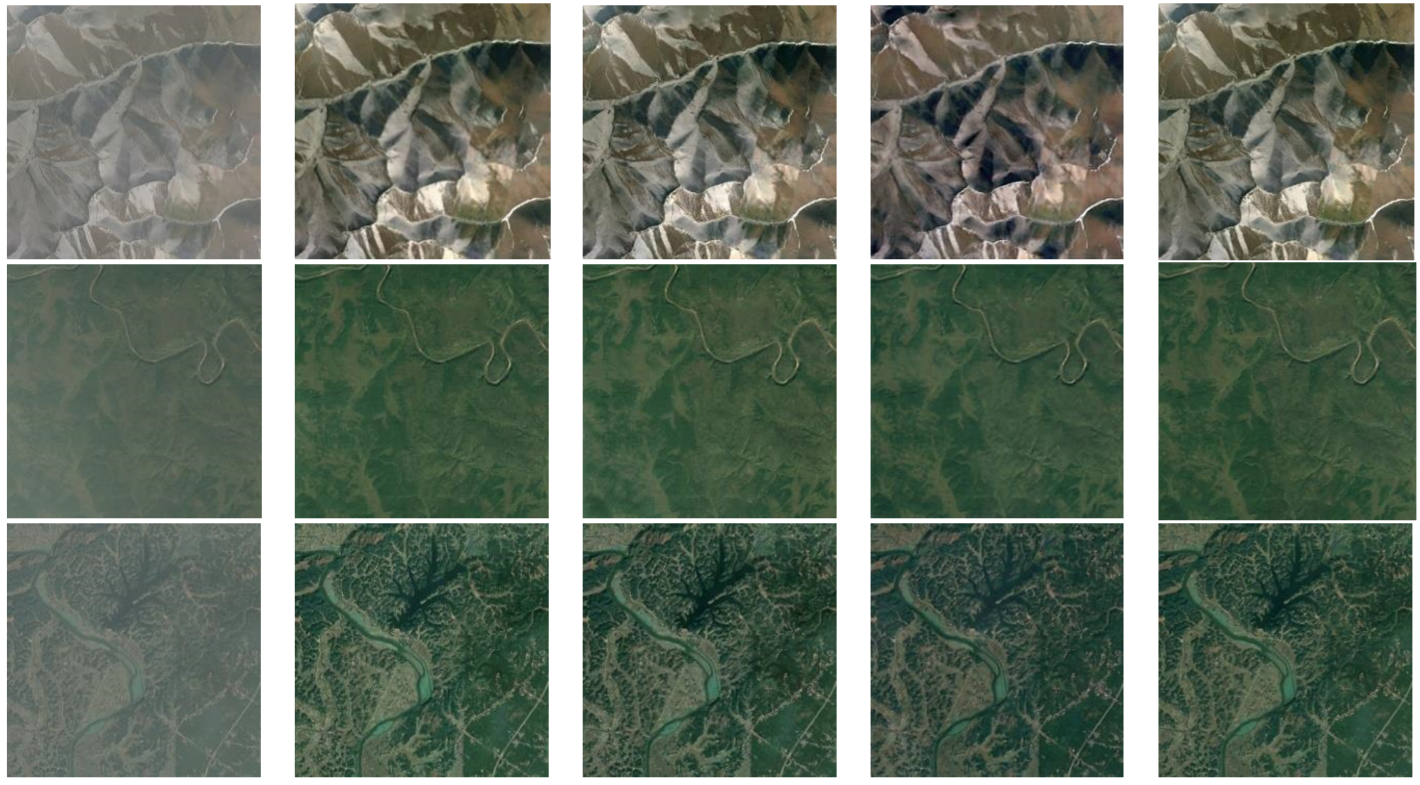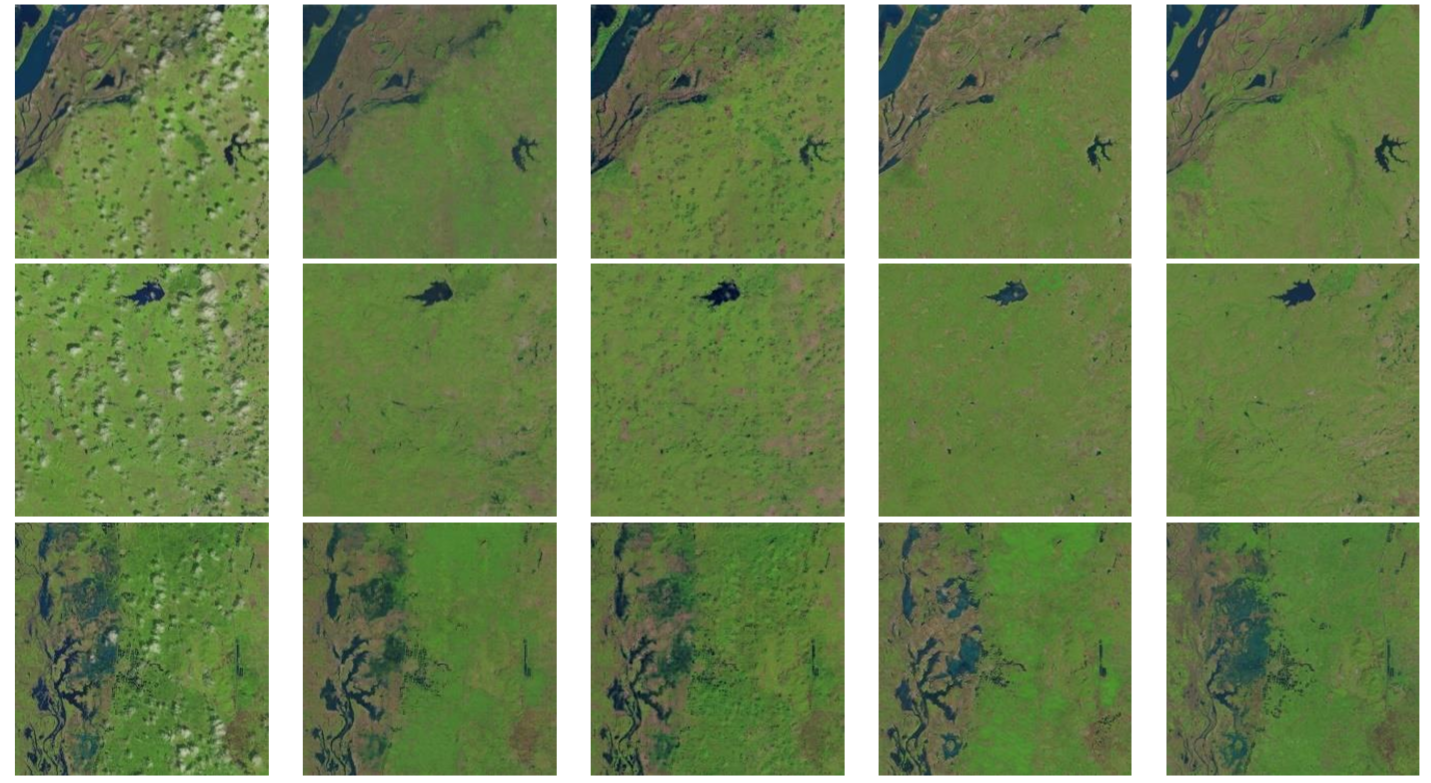- 2020.9.29 The draft is released now at https://arxiv.org/abs/2009.13015.
This is the source code of Cloud Removal for Remote Sensing Imagery via Spatial Attention Generative Adversarial Network. In this work, I proposes a novel cloud removal model called spatial attention generative adversarial networks or SpA GAN, which use spatial attention networks (SPANet) as generator. The architecture of SpA GAN is shown as fellow:
- Generator
SpA GAN uses spatial attention networks an generator. See ./models/gen/SPANet.py for more details.
- Discriminator
Discriminator is a fully CNN that C is convolution layer, B is batch normalization and R is Leaky ReLU. See ./models/dis/dis.py for more details.
- Loss
The total loss of SpA GAN is formulated as fellow:
the first part is the loss of GAN
the second part is standard
the third part is attention loss where
Click official address or Google Drive to download the open source RICE dataset. Build the file structure as the folder data shown. Here cloudy_image is the folder where the cloudy image is stored and the folder ground_truth stores the corresponding cloudless images.
./
+-- data
+-- RICE_DATASET
+-- RICE1
| +-- cloudy_image
| | +-- 0.png
| | +-- ...
| +-- ground_truth
| +-- 0.png
| +-- ...
+-- RICE2
+-- cloudy_image
| +-- 0.png
| +-- ...
+-- ground_truth
+-- 0.png
+-- ...
Construct the dataset by adding Perlin noise as cloud into the image.
Modify the config.yml to set your parameters and run:
python train.pypython predict.py --config <path_to_config.yml_in_the_out_dir> --test_dir <path_to_a_directory_stored_test_data> --out_dir <path_to_an_output_directory> --pretrained <path_to_a_pretrained_model> --cudaThere're my pre-trained models on RICE1(./pretrained_models/RICE1/gen_model_epoch_200.pth) and RICE2(./pretrained_models/RICE2/gen_model_epoch_200.pth).
Some results are shown as bellow and the images from left to right are: cloudy image, attention map, SpA GAN's output, ground truth.
In this section, I compares SpA GAN with conditional GAN and cycle GAN using peak signal to noise ratio (PSNR) and structural similarity index (SSIM) as metrics on datasets RICE1 and RICE2.
qualitative analysis
The result are shown as bellow and the images from left to right are: cloudy image, conditional GAN's output, cycle GAN's output , SpA GAN's output, ground truth.
quantitative analysis
| PSNR | SSIM | |
|---|---|---|
| cGAN | 26.547 | 0.903 |
| cycle GAN | 25.880 | 0.893 |
| SpA GAN | 30.232 | 0.954 |
qualitative analysis
The result are shown as bellow and the images from left to right are: cloudy image, conditional GAN's output, cycle GAN's output , SpA GAN's output, ground truth.
quantitative analysis
| PSNR | SSIM | |
|---|---|---|
| cGAN | 25.384 | 0.811 |
| cycle GAN | 23.910 | 0.793 |
| SpA GAN | 28.368 | 0.906 |
Contact me if you have any questions about the code and its execution.
E-mail: penn000@foxmail.com
@article{Pan2020,
title = {Cloud Removal for Remote Sensing Imagery via Spatial Attention Generative Adversarial Network},
author = {Heng Pan},
journal = {arXiv preprint arXiv:2009.13015},
year = {2020}
}
















